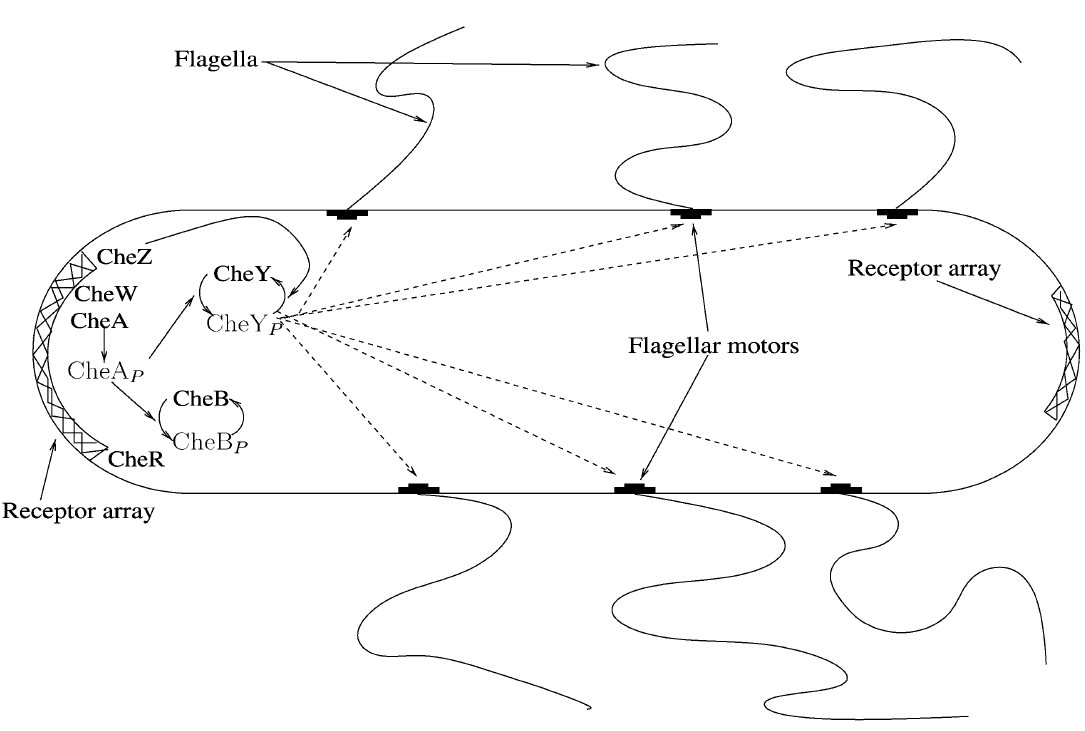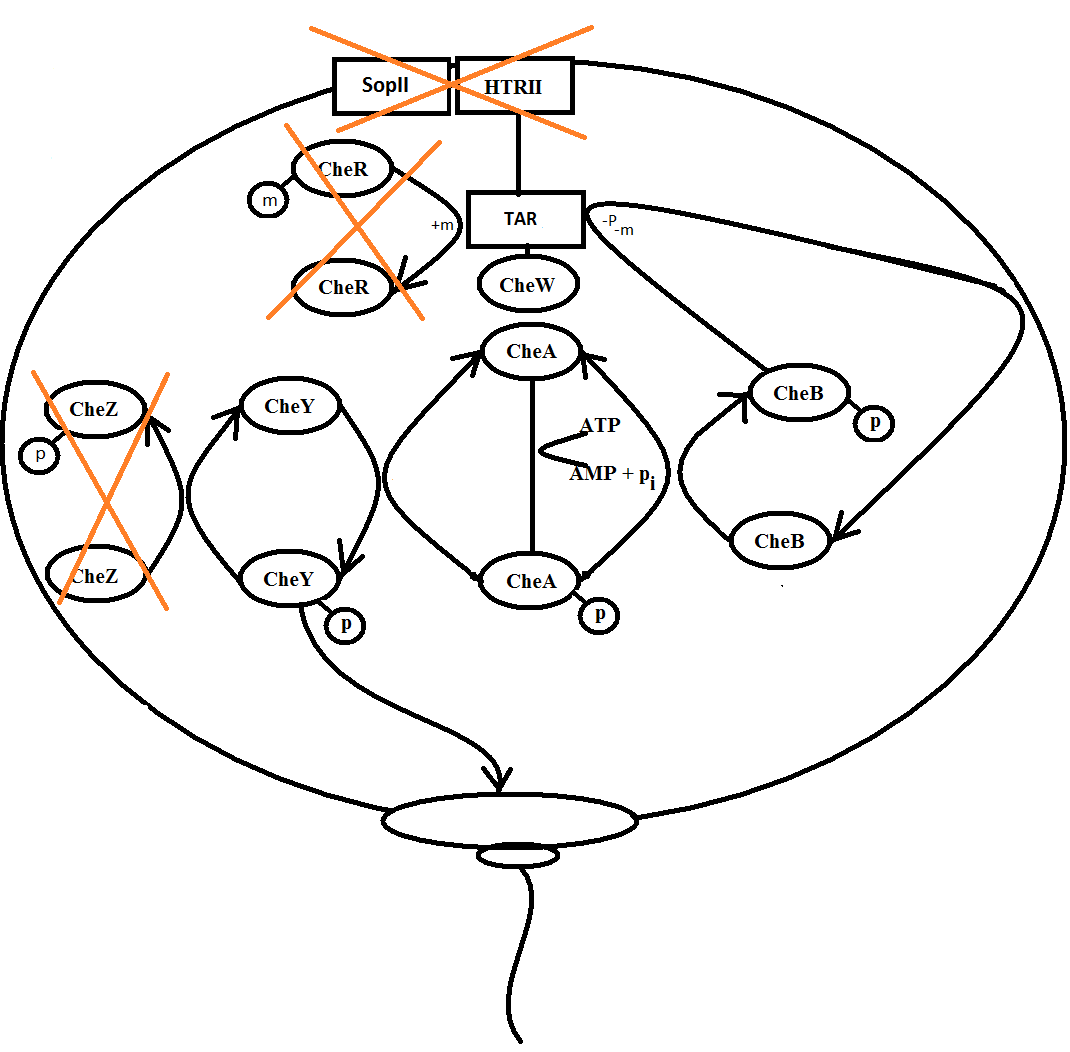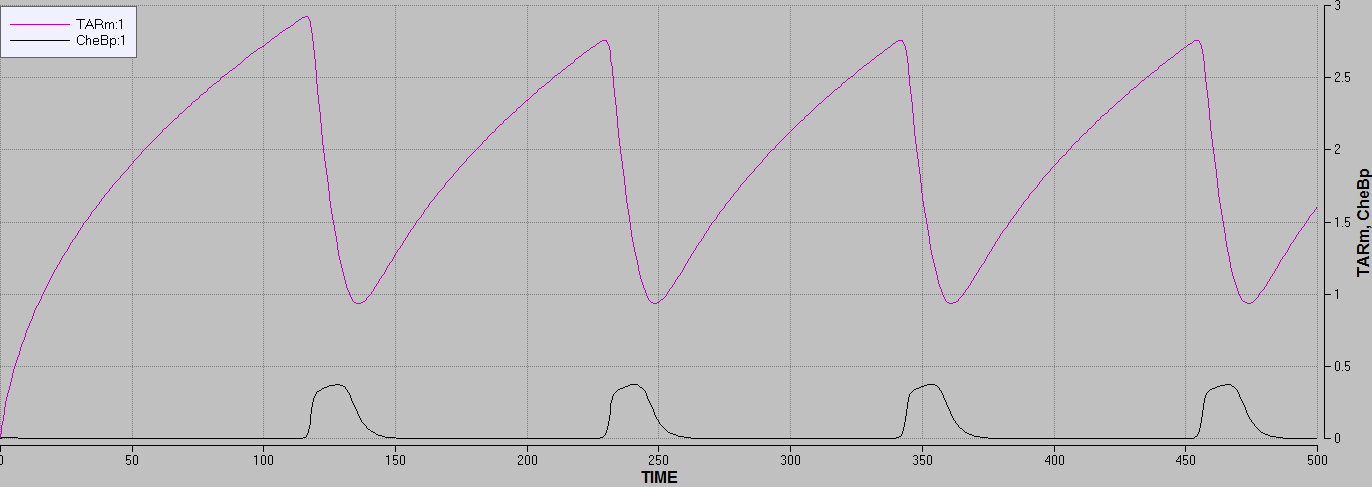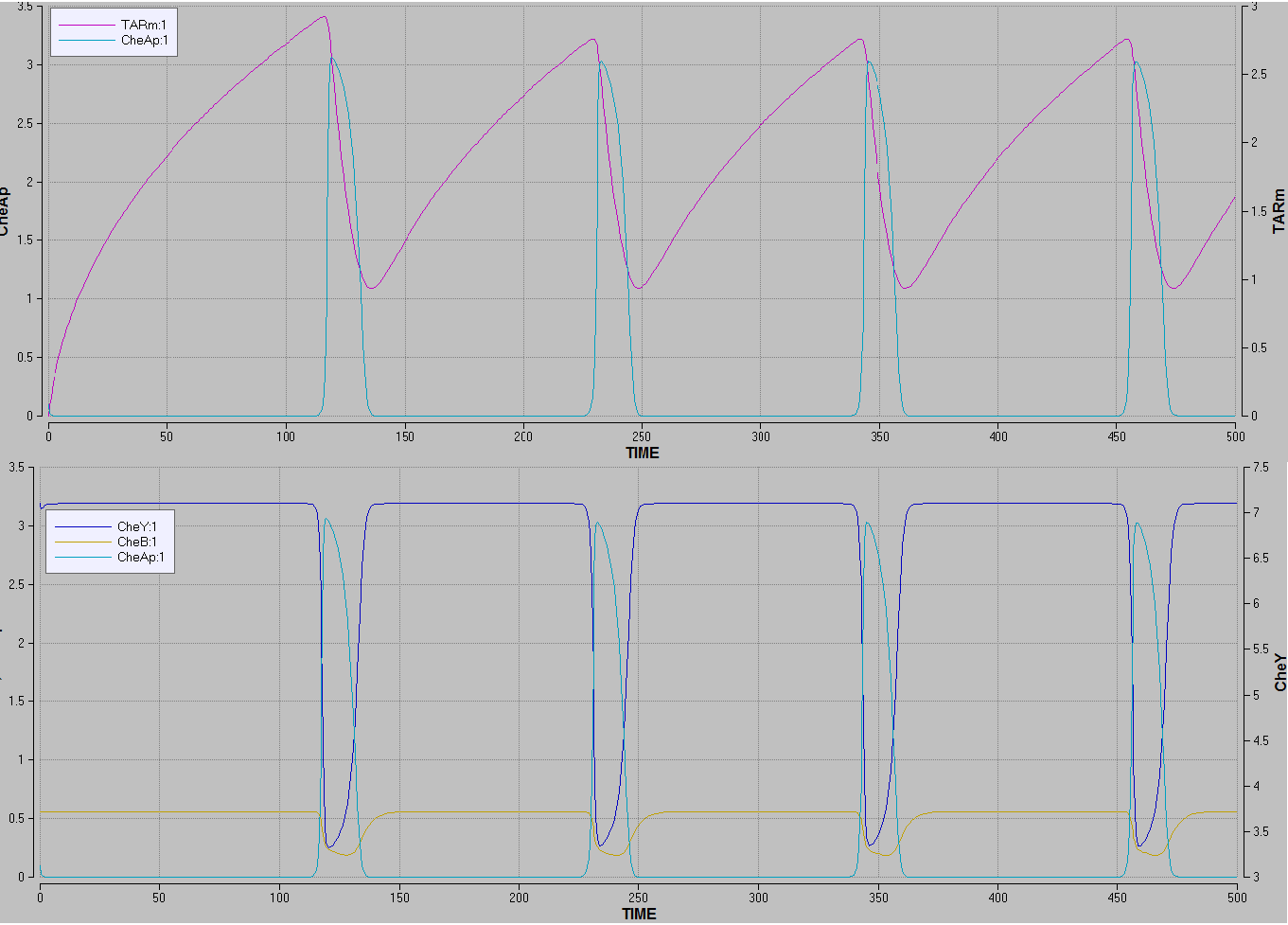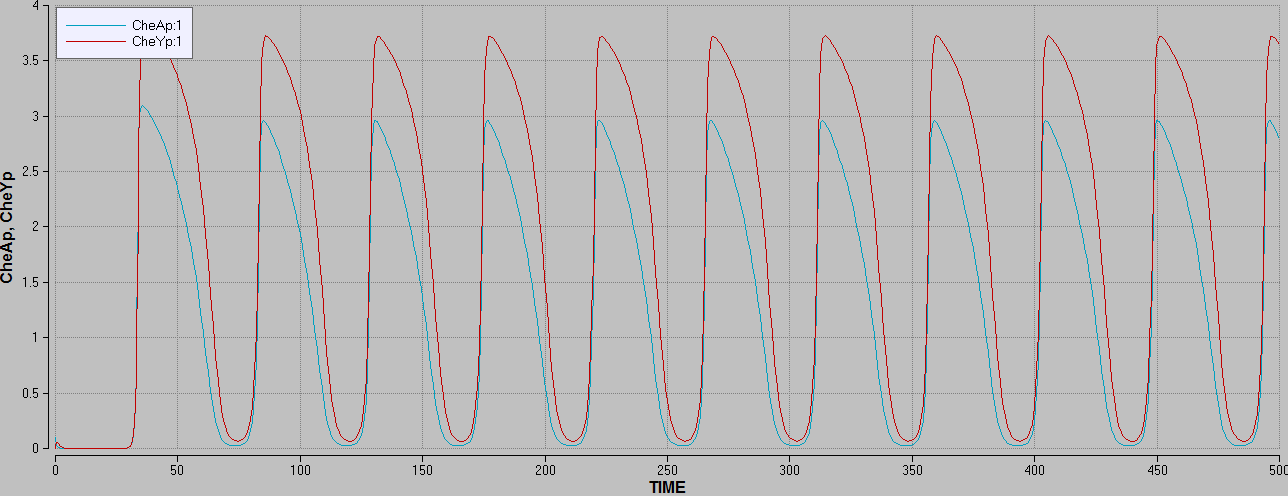Team:SDU-Denmark/project-bc
From 2010.igem.org
(Difference between revisions)
(→Model results) |
(→Biochemical Modelling) |
||
| Line 7: | Line 7: | ||
=== Motivation === | === Motivation === | ||
| - | + | In order to create a flow with bacteria using their flagella movement as the motor, it is important to understand bacterial motility and the effects our genetic manipulation have on it.<br> | |
Bacterial motion resembles a random walk, with periods of smooth swimming interrupted by brief tumbles that change the swimming direction. Chemotaxis is achieved by modulation of the tumbling frequency.<br> | Bacterial motion resembles a random walk, with periods of smooth swimming interrupted by brief tumbles that change the swimming direction. Chemotaxis is achieved by modulation of the tumbling frequency.<br> | ||
In our case, we have added phototaxis to ''E. coli'' MG1655 cells making them react to light as well as chemical gradients.<br> | In our case, we have added phototaxis to ''E. coli'' MG1655 cells making them react to light as well as chemical gradients.<br> | ||
| - | By creating a model describing the key features of the system, it will be possible to study the biochemical behaviour of such a system, and how different parameters will affect it, before it is implemented in a bacterial strain. | + | By creating a model describing the key features of the system, it will be possible to study the biochemical behaviour of such a system, and how different parameters will affect it, before it is implemented in a bacterial strain. |
=== The real system === | === The real system === | ||
| - | + | Several chemosensory systems exist in bacteria. The one most studied is the chemotaxis of ''E. coli''. Polar clusters of membrane-spanning methyl accepting chemotaxis proteins (MCPs) are positioned in the ends of the rod shaped ''E. coli''.<br> | |
Tar (responding to aspartate), Tsr (responding to serine), Tap (responding todipetides), Trg (responding to galactose) ang Aer (responding to oxygen) are the most common of these receptors seen in ''E. coli'' strains[[https://2010.igem.org/Team:SDU-Denmark/project-bc#References 1]]. Transduction of the signal between the MCPs and the flagella motor is managed by a particular fine-tuned signalling cascade, which is governed by several intracellular proteins.<br></p> | Tar (responding to aspartate), Tsr (responding to serine), Tap (responding todipetides), Trg (responding to galactose) ang Aer (responding to oxygen) are the most common of these receptors seen in ''E. coli'' strains[[https://2010.igem.org/Team:SDU-Denmark/project-bc#References 1]]. Transduction of the signal between the MCPs and the flagella motor is managed by a particular fine-tuned signalling cascade, which is governed by several intracellular proteins.<br></p> | ||
[[Image: Team-SDU-Denmark-Chemotaxis.png |thumb|center|500px| '''Figure 1:''' Schematics of the bacterial chemotaxis pathways]] | [[Image: Team-SDU-Denmark-Chemotaxis.png |thumb|center|500px| '''Figure 1:''' Schematics of the bacterial chemotaxis pathways]] | ||
| Line 23: | Line 23: | ||
'''Descriptions of the motor bias''' <br> | '''Descriptions of the motor bias''' <br> | ||
Given the limited detail available on the interactions of both CheY-p and CheY with the cytoplasmic FliM end of flagella motors and that this interaction may be quite complex, it has been a common, simplifying assumption of a number of authors that the fraction of time a motor spends spinning counter-clockwise can be expressed in terms of CheY-p by a Hill function. Such reactions are based on experimental observations. | Given the limited detail available on the interactions of both CheY-p and CheY with the cytoplasmic FliM end of flagella motors and that this interaction may be quite complex, it has been a common, simplifying assumption of a number of authors that the fraction of time a motor spends spinning counter-clockwise can be expressed in terms of CheY-p by a Hill function. Such reactions are based on experimental observations. | ||
| - | |||
=== Description of the model === | === Description of the model === | ||
| - | + | The model we will be using to predict biochemical behaviour of the system is a simplification of the real system.<br> | |
The simplified model does not consider the normal metabolism in the cell. It only includes the most important enzymes in the normal ''E. coli'' chemotaxis pathway and the proteins responsible for coupling the phototaxis to the chemotaxis.<br> | The simplified model does not consider the normal metabolism in the cell. It only includes the most important enzymes in the normal ''E. coli'' chemotaxis pathway and the proteins responsible for coupling the phototaxis to the chemotaxis.<br> | ||
Below, you will se a schematic representation of the system our biochemical modelling was performed on. The crossed-over enzymes and proteins have not been modelled as a differential equation but considered as a constant in the system.<br></p> | Below, you will se a schematic representation of the system our biochemical modelling was performed on. The crossed-over enzymes and proteins have not been modelled as a differential equation but considered as a constant in the system.<br></p> | ||
Revision as of 14:24, 27 October 2010
 "
"
